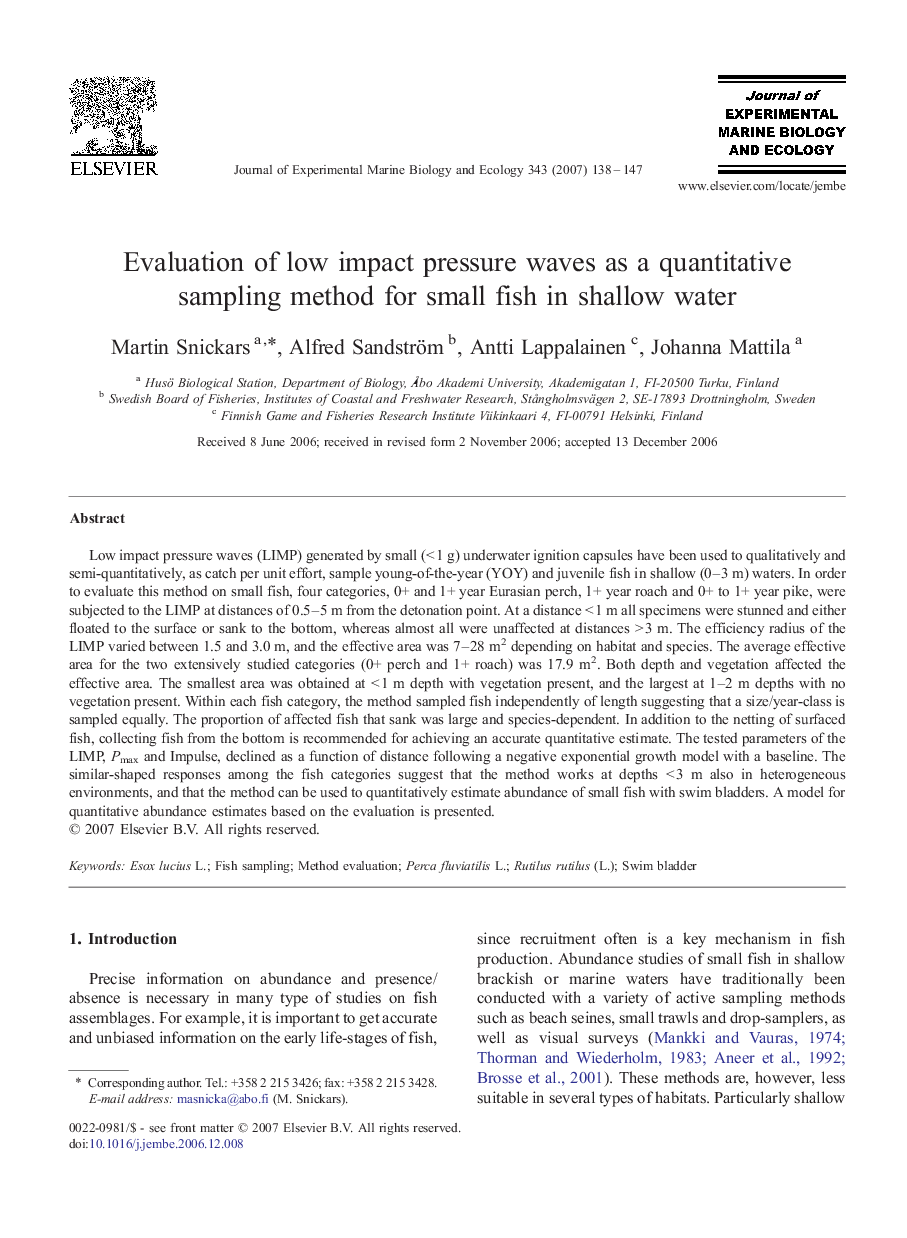| Article ID | Journal | Published Year | Pages | File Type |
|---|---|---|---|---|
| 4397863 | Journal of Experimental Marine Biology and Ecology | 2007 | 10 Pages |
Abstract
Low impact pressure waves (LIMP) generated by small (<Â 1Â g) underwater ignition capsules have been used to qualitatively and semi-quantitatively, as catch per unit effort, sample young-of-the-year (YOY) and juvenile fish in shallow (0-3Â m) waters. In order to evaluate this method on small fish, four categories, 0+ and 1+ year Eurasian perch, 1+ year roach and 0+ to 1+ year pike, were subjected to the LIMP at distances of 0.5-5Â m from the detonation point. At a distance <Â 1Â m all specimens were stunned and either floated to the surface or sank to the bottom, whereas almost all were unaffected at distances >Â 3Â m. The efficiency radius of the LIMP varied between 1.5 and 3.0Â m, and the effective area was 7-28Â m2 depending on habitat and species. The average effective area for the two extensively studied categories (0+ perch and 1+ roach) was 17.9Â m2. Both depth and vegetation affected the effective area. The smallest area was obtained at <Â 1Â m depth with vegetation present, and the largest at 1-2Â m depths with no vegetation present. Within each fish category, the method sampled fish independently of length suggesting that a size/year-class is sampled equally. The proportion of affected fish that sank was large and species-dependent. In addition to the netting of surfaced fish, collecting fish from the bottom is recommended for achieving an accurate quantitative estimate. The tested parameters of the LIMP, Pmax and Impulse, declined as a function of distance following a negative exponential growth model with a baseline. The similar-shaped responses among the fish categories suggest that the method works at depths <Â 3Â m also in heterogeneous environments, and that the method can be used to quantitatively estimate abundance of small fish with swim bladders. A model for quantitative abundance estimates based on the evaluation is presented.
Related Topics
Life Sciences
Agricultural and Biological Sciences
Aquatic Science
Authors
Martin Snickars, Alfred Sandström, Antti Lappalainen, Johanna Mattila,
